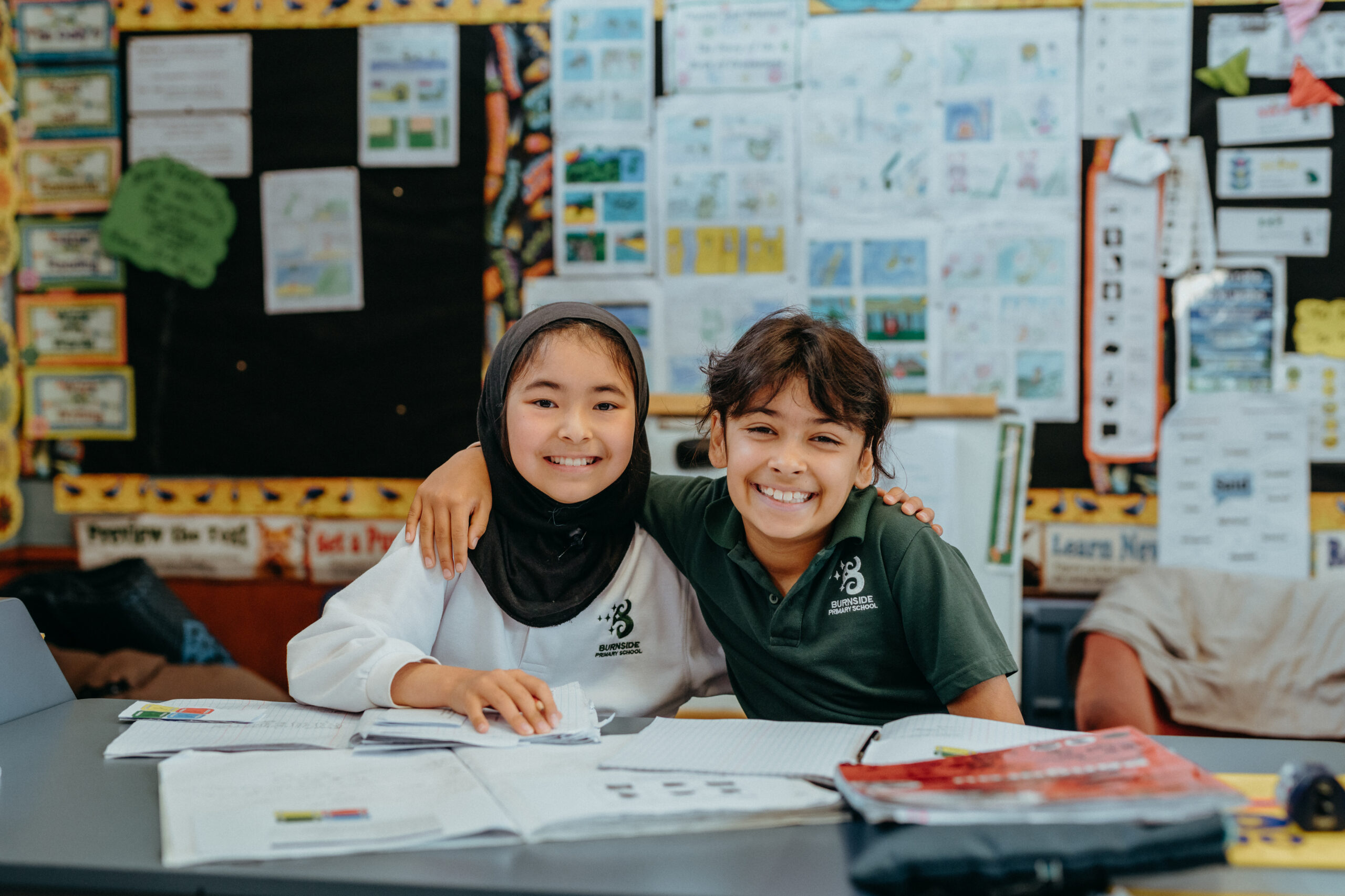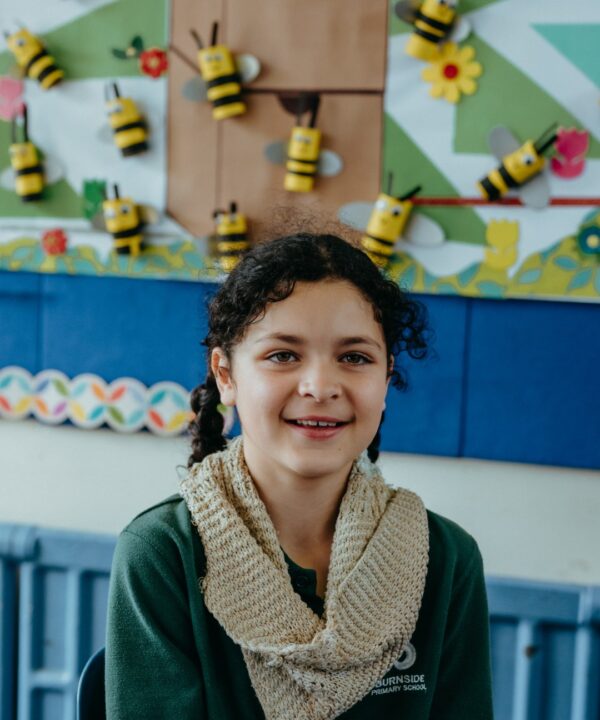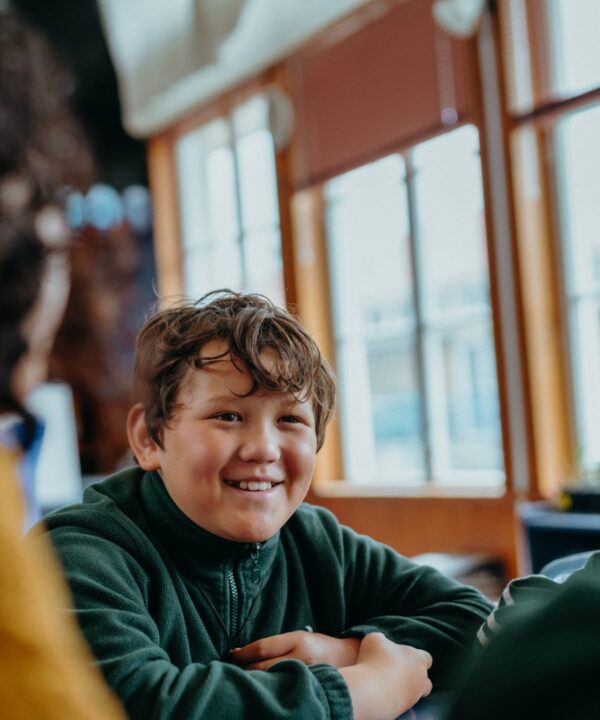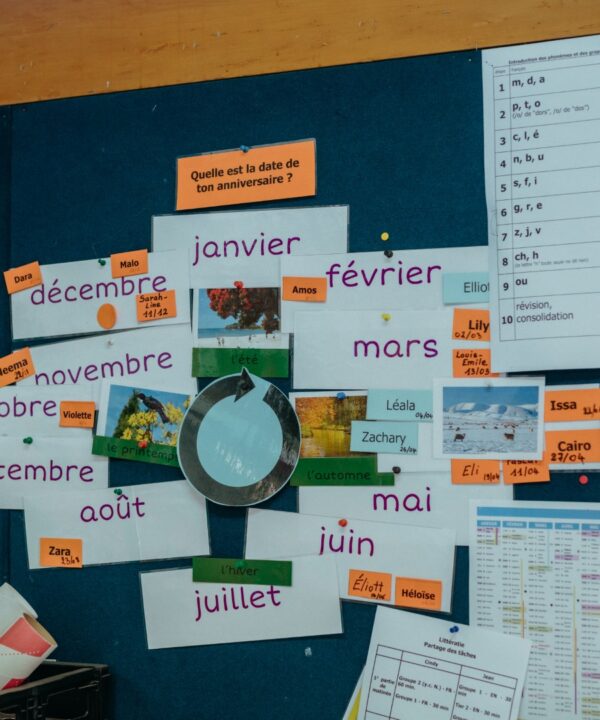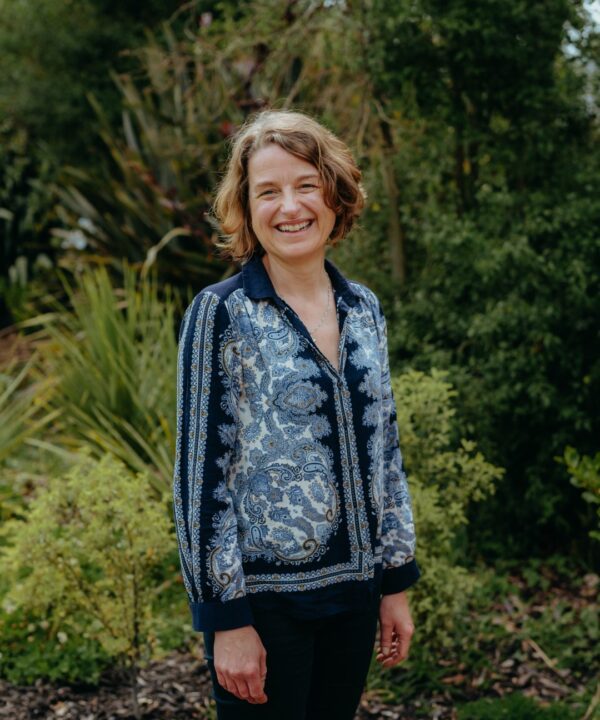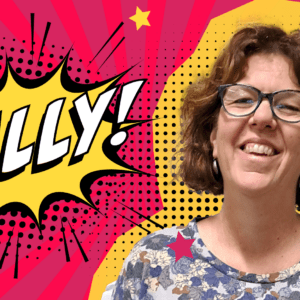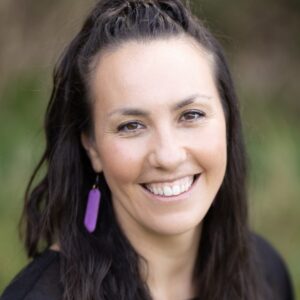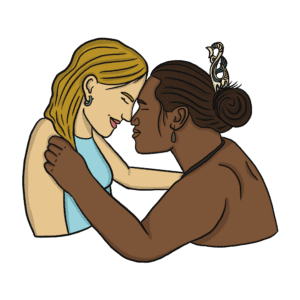At Burnside Primary in Christchurch, class leaders start the day with whaikōrero, including mihi and pepeha. The pepeha might be in Mandarin Chinese, or in one of the many other languages spoken at the school.
The day’s student leader also offers a secular karakia and a waiata they’ve chosen for everyone to sing. The tikanga finishes with a box of cut-up fresh fruit and vegetables passed around so everyone has the chance to eat.
It’s a visible statement about the direction the school has taken under the guidance of Principal Matt Bateman, who’s Ngai Tahu and a fluent te reo speaker. It pre-figures, too, the ‘Whakapapa me te whanaungatanga’ element of the new histories curriculum, with its emphasis on migration and identity.
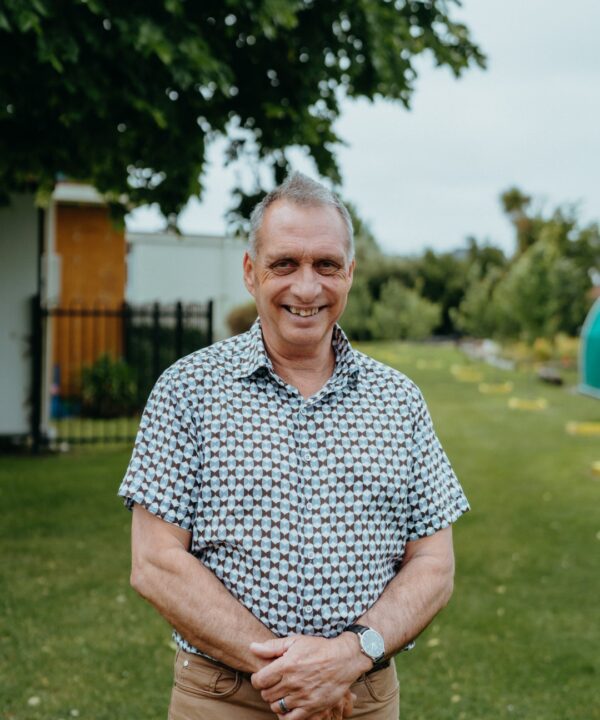
“I used to think I was doing things quite well for our various communities,” says Bateman. The school has families from 44 countries of origin. “I thought I knew them, but what really happened in changing the direction was the mosque attacks.
“We had ten children and six families where people were either shot or witnessed horrible things. The school became involved with those families and as a result we have had some wonderful things happen. It was very eye-opening.”
And it led to fresh eyes on how the school worked with communities, and several initiatives, including the daily pepeha. Another that’s been particularly successful is a language programme on Wednesday afternoons. Korean, Chinese, Japanese and Farsi tutors work with children from these backgrounds. “They work in their first language, but mainly as a cultural experience,” says Bateman. “Children get a really good understanding of where they come from, and they keep their first languages alive so they can speak to the grandmas and aunties and uncles back home.”
Most children in Years 5–6 have a term each in French, German, te reo and Spanish. Another group are in one of only three French bilingual programmes in Aotearoa New Zealand. “It really helps if you can have an evolved identity in every child, so they actually know they have a history, and others have a rich history. There are places in the world they can go back to or learn about – for example, that 27 countries have French as an official language and they could go there. They might find out their country invented a lot of useful stuff or that it is a big player globally.”
“It really helps if you can have an evolved identity in every child, so they actually know they have a history.”
Children become more interesting to each other, he says, instead of “everything being dumbed down to English. They whakapapa to understand their families, to appreciate difference, and they collaborate. It opens up the world in different ways. They become curious about global problems and ways to sort them out. They realise you have to know the languages first, as a way of communicating, then they can have a crack at solving problems instead of worrying about them.”
Bateman is also a co-leader of the local kāhui ako, with 7,000 students, and says a recent survey of Years 9–10 found that students from some migrant communities felt isolated and disconnected from school and education. “As a group of schools we have to do better. Kids need to understand themselves better, where they come from, so they can connect to the aunties and uncles and grandads. It gives them something else – otherwise they go to their rooms on their own with their devices and they’re quite lonely.”
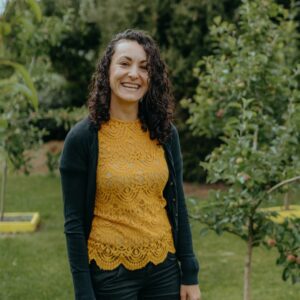

The kaupapa has gone a long way to strengthening whānau relationships, and the school now employs a community liaison officer, who speaks four languages, to nurture the work. An email tree means the school newsletter is translated by volunteers into multiple languages. It’s been invaluable for getting information to diverse communities about COVID -19.
“It’s really changed the school, the last couple of years. Before we might have got 50 people at assembly on a poor day. Now we had an after-school fair for three hours, and several hundred turned out. It goes a bit beyond the old sausage sizzle – which wasn’t so good for halal or the Hindi community.”
What’s more, it’s changed his job – “It’s really exciting, the last couple of years. It’s made the job fun.”
***
In many early childhood centres, stories of migration are already front and centre – they’re as foundational as the relationships that educators form with tamariki and whānau, and a rich resource for the primary sector too.
“They’re implemented into daily activities,” says Ina Ropu-Tengaru at Nuanua Kindergarten, one of a group of teacher leaders working in Porirua who spoke to Ako. At Nuanua, families are mainly of Samoan and Tokelauan descent, but is open to all, including families from Syria.
“It just becomes a natural part of teaching,” says Lana Nootai from Toru Fetū Kindergarten. There are mihi and karakia and stories, and the children’s own storytelling, and grandparents and great-grandparents visiting to share language skills – all making deep connections to where a child is from, and where their family is from.
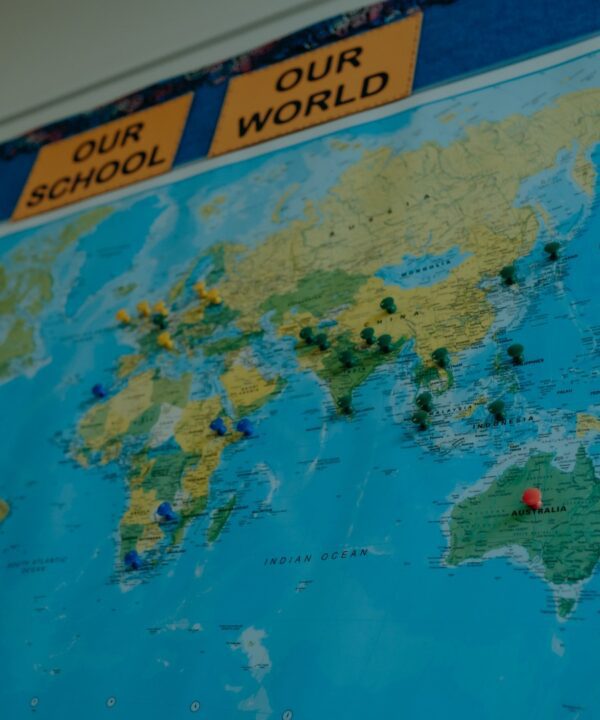
“It’s an important part of what kindergarten teachers offer children – experiences that go back into the past, and then forward, so that you have the past, present, future. It’s really important for children and their families to be exposed to that, and for teachers to be promoting this,” says Trinity Coulston, also from Toru Fetū.
These stories connect in living ways to Te Whāriki – particularly, the mana reo (communications) and ngā hononga (relationships) elements of the curriculum. “We have mihi, and children and whānau share their maunga, their history, where their sense of belonging is, their tūrangawaewae, where their whanaungatanga is – which really connects with Pasifika and all the 15 different cultures at our kindergarten,” says Nga Ropu from Tui Park Kindergarten. “It becomes storytelling when we’re sitting down, it’s displayed in the environment and wharenui, and it’s incorporated into portfolios and into Storypark.”
Andy Cairns, a senior teacher with Whānau Manaaki Kindergartens, says the concept of mihi expands to include other elements of teaching, such as bush walk programmes (connecting to local stories and identifying plants that are seen in Aotearoa and also used in the islands), having community elders coming in to share traditional stories and cultural art forms, and regular visits to community cultural events.
“Children also start the day with devotion as a way of connecting with the languages of the kindergarten and children. It supports connections to the islands and also allows for the natural exploration of stories that the teachers who migrated from the islands can share with the children.”
Altogether, stories of migration and pepeha are a fantastic resource, and one that primary educators can tap into, says Ngaretta Strong, the Teaching and Learning Support Liaison Teacher. “For transitions to school, we have a booklet that explains the child’s cultural identity, the languages spoken at home, and we link with cultural responsiveness within the curriculum.”
It’s also invaluable when working with families on individual education plans. “We include work from Sonja MacFarlane’s Te Pikinga ki Runga, where there are sections on the child’s tinana, mana motuhake, hinengaro, hononga, which bring in the child’s whakapapa.
“It can be very sensitive when talking with children who need extra support, but we set the scene. You can say we connect to migration because we’ve connected to past ancestors. We can say a prayer or a whakataukī, so when we have our hui, the whānau are not on their own. They’ve brought in the past and we’re celebrating together. Maybe we’re doing goalsetting but we’re also celebrating who the child is, who the family are, and the ancestral past links. It’s a spirituality that we’ve shared. It’s a huge part of our kindergartens.”
The group says they feel really excited about the possibilities of the new histories curriculum, because as teachers they collectively want all children in Aotearoa to be supported to learn in ways that support and nurture their cultural identity and sense of self. They hope the new curriculum will open up rich and meaningful ways of teaching and learning to primary educators too.
“It’s just beautiful to see. When we use different languages in our learning stories or just daily kōrero, saying one or two words from a child’s language – and seeing the child’s eyes beaming, ‘You can speak my language!’ It might just be using uncle Google, but seeing the face beam – wow – they’re more engaged in learning.”

***
History is already richly embedded in the local curriculum, the marau ā kura, at Te Kura o Waikare in Northland. Here, cultural heritage runs all the way back to the earliest human arrivals in Aotearoa New Zealand – a heritage that tumuaki Cheryl Meek is happy to share with the sector.
A special character school centred on the local hapū Te Kapotai, Waikare’s curriculum has a maunga contextual framework – the knowledge connected to the mountains that surround the school’s rohe informs the curriculum.
One maunga has the stump of the tree used to build the famous waka Ngātokimatawhaorua, now at Otaua, which was built by Ngāpuhi rangatira, Toki Pangari. Its name derives from that of a waka used by Kupe, who is acknowledged as the first explorer of Aotearoa – thus Ngātokimatawhaorua connects early Māori migrations with later European arrivals.
“Migration is very important to us,” says Meek, recounting the story of Te Koukou from Waikare who encountered Captain Cook in the Bay of Islands. Te Koukou was wounded in a battle at Motuarohia, and the Tahitian navigator and arioi travelling with Cook, Tupaia, accompanied Te Koukou back to Waikare to support his healing, with a ceremony called Houhou te Rongo. Hawaiki, associated with the Tahitian island of Ra‘iātea, is said in some traditions to be the place from where Māori first migrated to Aotearoa.
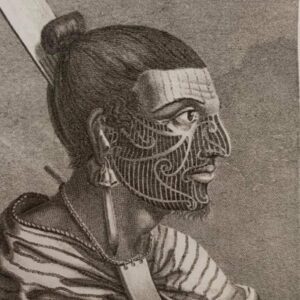
Tupaia gave Te Koukou two taonga (now in the British Museum), and during the Tuia 250 celebrations in 2019 to mark Cook’s arrival here, the kura re-enacted the events. Meek goes on to explain, “the Tahitians travelling as part of Tuia 250, including a descendant of Tupaia, arrived on waka hourua Ngahiraka Mai Tawhiti at Waikare Inlet and we paddled out to meet them at the break of dawn. Our children paddled in the waka. We transported the Tahitians to the marae to hand over a mauri stone from Tahiti.
“It was something profound for our children. We learnt about our relationships with the people of Tahiti, the historical context of the voyage.”
“It was a huge community effort to achieve all that, and a very spiritual journey as well. It was something profound for our children. We learnt about our relationships with the people of Tahiti, the historical context of the voyage, that we spoke a similar language, and about the taonga Tupaia gave us.” Tamariki were also involved in the writing of a book published as part of Tuia 250, about the events.
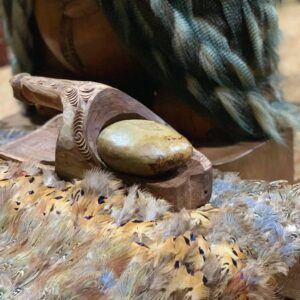
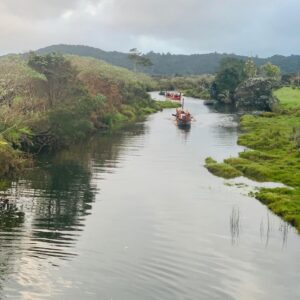
The kura is also very involved at the annual Waitangi celebrations, as part of the waka fleet and as part of the pōwhiri that greets the prime minister and their group, and the governor-general. “The Bay of Islands collective of schools is well aware of what we do – I share it with the principals’ collective and others. We are happy to share, if they’re interested.”
***
Russell School in Northland looks out at the oldest existing church in the country, standing at what was the frontline of European arrival in Aotearoa from the early 1800s. It’s a complex history to teach but for Principal Melissa Jackson, whose tupuna Thomas Hansen arrived with the missionary Samuel Marsden in 1814, it’s an essential part of the local curriculum. “Children love storytelling – hearing and sharing their stories – and the more information they have and the more connections they can make, the more they can work out what is right for themselves and their families and the community.”
Descendants of Māori and Pākehā from that time still live in the town. Streets are named for Europeans whose land deals are not viewed well by Māori. Tamati Waka Nene, one of the first signatories to Te Tiriti o Waitangi, and an advocate for it, is buried in the churchyard of that oldest church, Christ Church. “It’s a difficult history to share with the children – what is and what’s not fair and about those involved. At some point you have to return to the significance of the Declaration of Independence, He Whakaputanga o te Rangatiratanga o Niu Tīreni, and the Treaty.”
Charles Darwin himself donated £10 for the church to be built, after he arrived in the Beagle in 1835 and was deeply shocked by the Europeans’ behaviour. “There’s whaling and sealing, prostitution and gun running and rum running – it’s difficult. We talk about ‘early enterprise’!” says Jackson. “And the archaeology is still here – I took a class to the beach and a student found an old clay pipe stem.”
“It’s a difficult history to share with the children – what is and what’s not fair and about those involved.”
Kaumātua run kapa haka and tikanga programmes at the school to ensure the waiata and karakia reflect the local sites and historical figures, including Kupe and Hone Heke. “It’s really important for tamariki to engage with their history – where they belong in life, so from there they step into the world, with a sense of self. It’s especially important for Māori, where there’s less individualism, that there’s a sense of connection to whānau, hapū and iwi, and through the land. From there, you can develop a global view.”
And she thinks the teaching of history holds possibilities for, at least, a better understanding of different perspectives. “Our older children can appreciate that this community was shaped first by the Treaty and then the incredible shock when the capital was moved to Auckland. People were making a good living, and then the boom was gone. And that’s just the history of the men in fancy hats! There were the women too – hauling water in pails and educating the children – there’s a real gap in resources about that.”
History, too, connects to science and the natural environment, where local people are doing amazing work. The school has been a part of the Globe at Night project, and Jackson connects this with the story of Rangi and Papa. “Children could see that the purpose of these myths was to explain creation and natural phenomena with the available information – that the ancestors were looking at the same kinds of things, investigating the same kinds of things, and using stories to talk about it.”
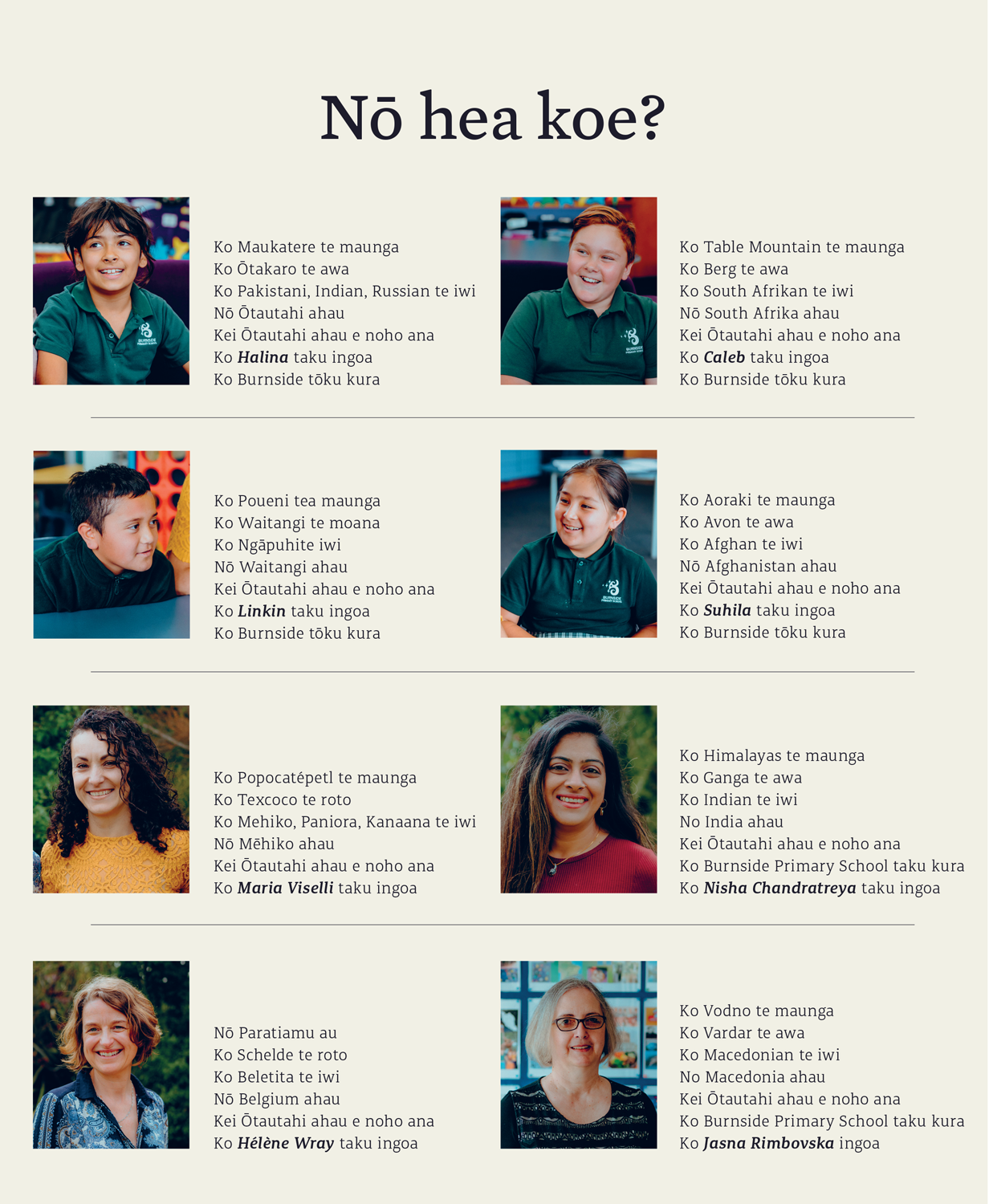
RESOURCES
The Ngai Tahu cultural map is an awesome resource for most South Island schools. It records and maps more than 1,000 Ngāi Tahu stories and place names onto a virtual landscape.
Tamariki wellbeing website Sparklers have a pepeha worksheet along with links to other useful resources for creating your own pepeha.
